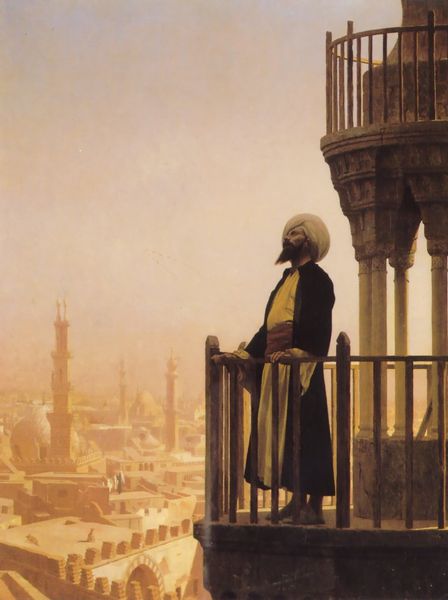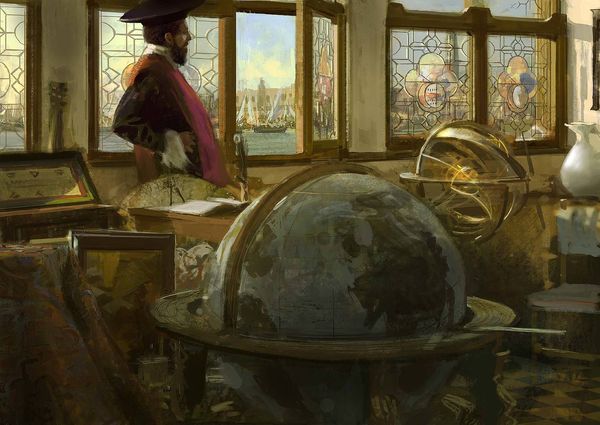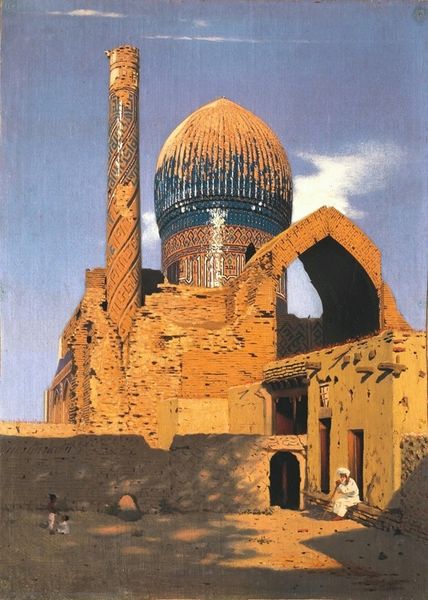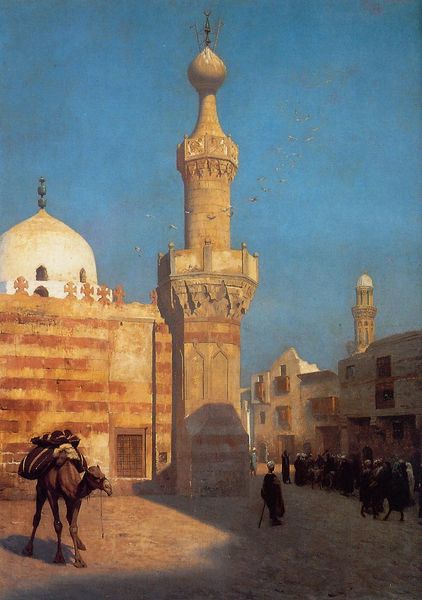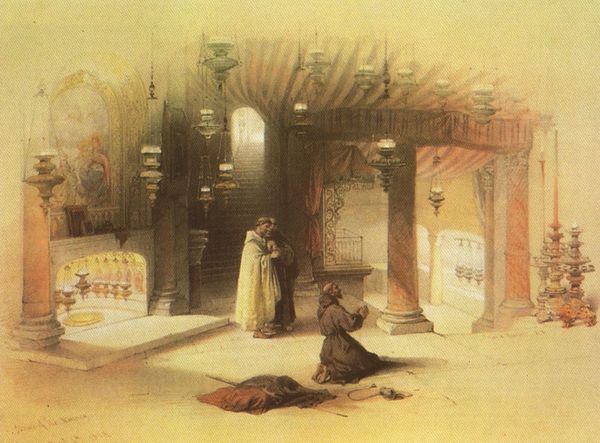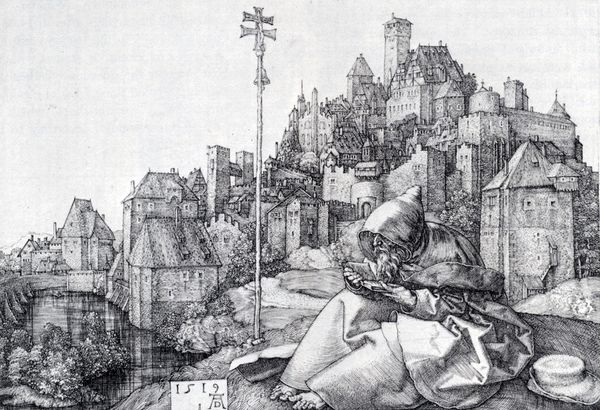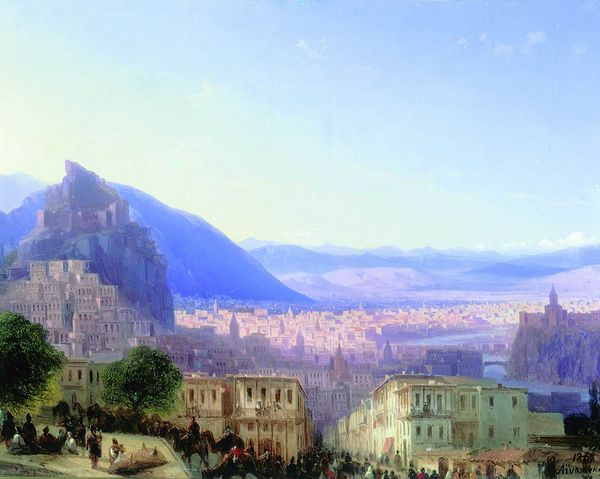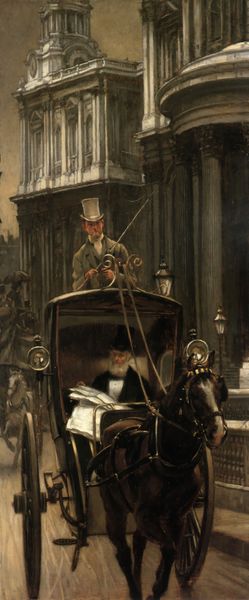
A Muezzin Calling from the Top of a Minaret the Faithful to Prayer 1879
0:00
0:00
jeanleongerome
Private Collection
painting, oil-paint
#
painting
#
oil-paint
#
landscape
#
orientalism
#
men
#
genre-painting
#
academic-art
Dimensions: 91.4 x 66 cm
Copyright: Public domain
Curator: What a fascinating view! The painting is Jean-Léon Gérôme's "A Muezzin Calling from the Top of a Minaret the Faithful to Prayer," dating from 1879. It offers such a vivid perspective. Editor: Indeed. My first impression is how skillfully Gérôme renders the textures – the aged stonework, the almost tangible atmosphere. The light itself feels heavy with heat. Curator: Gérôme was a master of academic art and Orientalism, so this depiction, while beautiful, must also be seen through the lens of its colonial context and the Western fascination with the 'exotic' East. He presented the Islamic world in ways that often catered to European expectations. Editor: Right, and it's worth questioning how "authentic" these visions actually were. The precision in his oil paints is compelling, the details of the muezzin’s garments, the intricate stonework. But it makes me think of the labor involved – the pigment grinding, the canvas preparation – all geared toward creating this spectacle for a Western audience. Curator: Absolutely. Consider also the market forces at play. Paintings like these were incredibly popular in Europe, satisfying a demand for images that confirmed certain orientalist stereotypes and notions of cultural supremacy. This wasn't just art; it was a commodity fueled by power dynamics. Editor: It feels manufactured as much as created. He doesn't capture the messiness of the real, lived-in world that those raw materials come from. Gérôme aestheticizes the landscape. But it's hard to dismiss the craft evident. Look at the way he has placed the figure on the top. The loneliness he feels? Or simply the duty... Curator: The architecture also reinforces the social structures of the time. The minaret becomes a symbolic vantage point from which to project power, both spiritual and, implicitly, political. How does this resonate with a society that positions itself above? It does makes us consider the relationship between religious institutions, art patronage, and political power in the 19th century. Editor: Well said! It does show how art reflects both beauty and how power works to produce those narratives through his brushes. A complex blend of skill, labor, materials, and, yes, exploitation. Curator: Yes, the dialogue with these pieces remains so very relevant, to this day.
Comments
No comments
Be the first to comment and join the conversation on the ultimate creative platform.

